Whiskey Row
Introduction
Text-to-speech Audio
(Please stand at the corner of King and Ridout next to the heritage plaque to get the best view.)
Welcome to King Street, which was also known as Whiskey Row during the late 1800s! Whiskey Row was infamous for drinking, debauchery, fights and even a murder. This was an area where women did not walk unattended.
We are standing in the original placement of London’s first tavern. Built by Peter McGregor, the city’s first tavern was a log structure in London’s pioneer days of the 1820s at the corner of King and Ridout.
As the population grew from its pioneer days into a quickly developing city, London’s need for hotels and taverns skyrocketed. From the rapidity of industrialization, the expansion of the Great Western Railway in 1853 and the tourism and commerce that developed as a result, public drinking and the number of businesses considered “of ill repute” grew as well.
Images
King Street, north side between Richmond and Clarence Streets
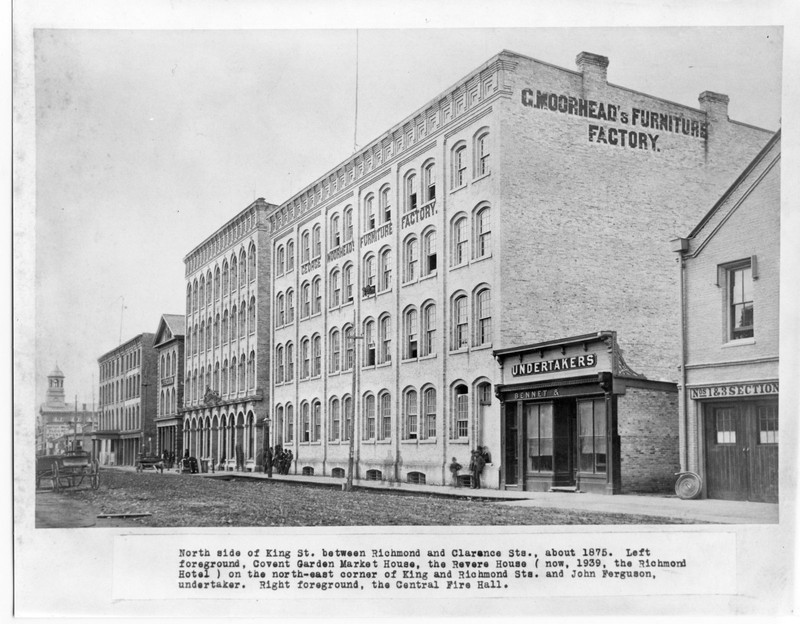
Arkell's Hotel
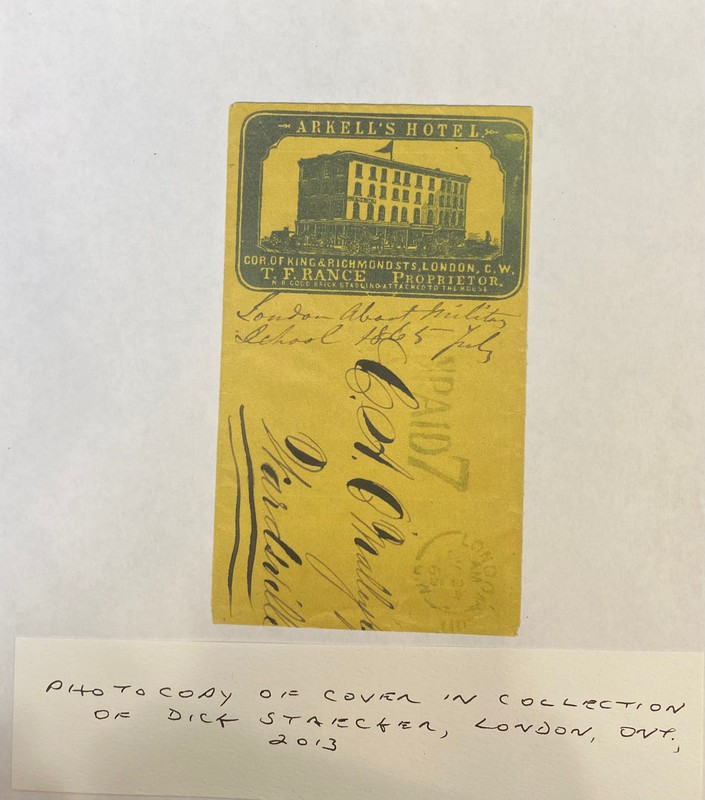
Corner of King Street and Richmond, view of Revere House
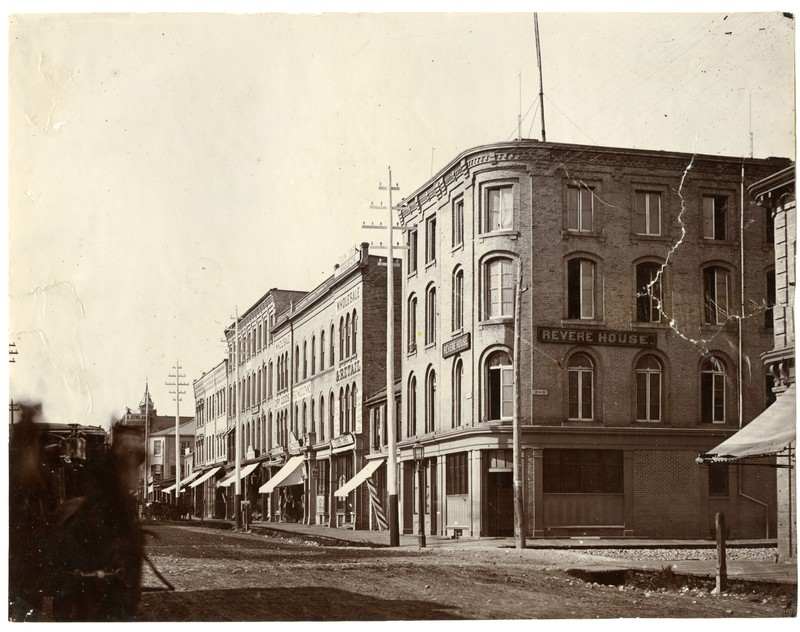
Covent Garden Market with view of King Street
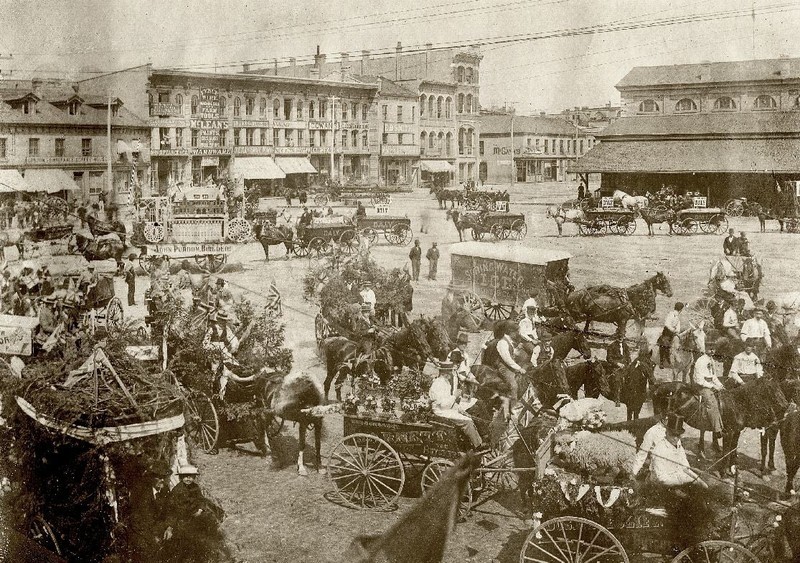
Cartoon of Private Moir and murder of Sargent Lloyd
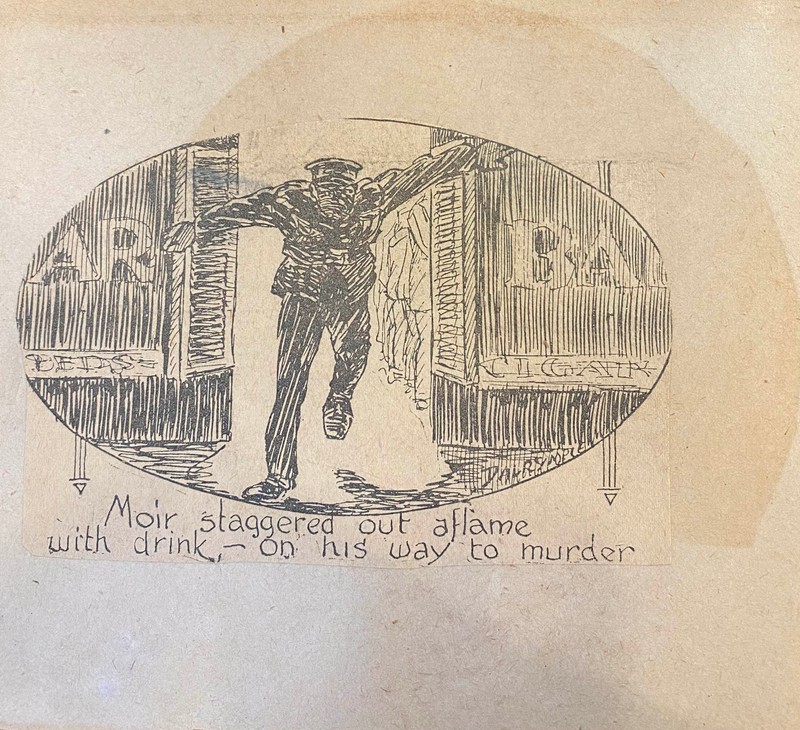
Backstory and Context
Author-Uploaded Audio
Listen to a narration of this entry's description by Public History.
Text-to-speech Audio
King Street specifically developed as a popular drinking area simultaneously as factories and businesses, like the Covent Garden Market, London Furniture Factory and London Machine Tool Company began operating along the street. There would be nineteen hotel taverns around the vicinity of Covent Garden Market and specifically nine along King Street in the 1860s.
By 1873, with a population of about 17,000 people, the numbers had grown to 110 taverns and 60 hotels. Hotel taverns functioned as a community centre. The upstairs was rented out to travellers and was a permanent address for many working-class Londoners. While the main floors acted as a gathering space where people could drink, share a meal, socialize, and talk business.
Many of the patrons of these nine hotel taverns on King Street would be working-class Londoners on their way home from the factory. One favourite spot was Richmond Tavern on the corner of Richmond and King Street. Still operating today on 372 Richmond Street at King, Richmond Tavern is the longest surviving hotel tavern in London. Opened in 1852 by the grocer, DWC Day- the building has always been a tavern, but with many different names. At one point it was Arkells Hotel, during the American Civil War it was known as the Revere House and was renamed to Richmond Hotel in 1893.
Fun fact: during the American Civil War, both the Confederacy and Union travelled to London to replenish supplies and used the Revere House as their headquarters. It was known to be a hotbed tavern for spies on both sides of the conflict.
James Dean, who was in charge of the scales at the Covent Garden Market where farmers weighed their produce spoke with the London Free Press and described how taverns served ale by saying: “in those days they poured beer into a pewter tin with holes at the top to warm it. Another trick, which is better known and more widely employed, was the hot iron heating method. A hot poker was put into the beer. This made mulled ale and was considered superior to the ordinary kind. It gave the liquor a different taste.
Fighting, debauchery and drunkenness was a nightly occurrence at all of London’s taverns, with the city’s jail consistently filled with people from whiskey row. Only one person died in a saloon brawl. According to the London Free Press, one “Trusty” Warwick got into a fight with Joe Ward at Morkin House as a mob of other drunken men were fighting. Ward threw Warwick on the floor where he died from his skull hitting the cement steps. Ward would spend one year in the penitentiary for Warwick’s death.
In other instances, poor decisions and dangerous actions were blamed on alcohol. From the London Free Press and in a temperance specific perspective, an article indicates that a Private Moir was said to have staggered into the Bank Hotel, at midnight returned to the Wolseley Barracks and fatally shot his commanding Sargent Lloyd. He was placed in the Hamilton Asylum and specifically blamed Whiskey Row on his downfall.
In the 1880s, the Salvation Army opened a chapter along King Street, signalling the changing perspective surrounding alcohol in London. The dry wave of the temperance movement and prohibition changed the landscape of Whiskey Row and the greater city of London. Few hotels survived and many of the buildings turned into banks, stores or residences. Grocery stores were no longer able to sell alcohol and the hotels that survived greatly increased the cost of rooms and meals, making up for the loss of revenue.
Sources
Baker, Michael. Downtown London : Layers of Time. London, Ont: City of London and London Regional Art and Historical Museums, 1998.
Carty, Edmund J., and Catherine B. McEwen. The Carty Chronicles of Landmarks and Londoners. London, Ontario: London & Middlesex Historical Society, 2005.
Rechnitzer, Olaf. "London's Famous Whiskey Row, With Crimes and Brawls, Remains But a Memory to Londoners-- Only one of Ten Hotels Survive." London Free Press (London, Ontario), no date available.
Wolfe, K., & Radford, C. Barhopping into History. London, ON: ChK’s Publishing, 2013.
Ivey Family London Room, London Public Library, London Ontario
Ivey Family London Room, London Public Library, London Ontario
UWO, Special Archives and Collections
UWO, Special Archives and Collections
Ivey Family London Room, London Public Library, London Ontario
